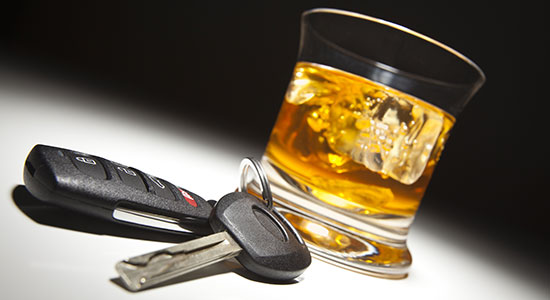
Dec. 5, 2018 – For the third straight term, the Wisconsin Supreme Court may hear a case to determine whether police were legally allowed to draw a drunk driving suspect’s blood, based on Wisconsin’s implied consent law, when the suspect was unconscious.
Aside from highlighting the unfortunate theme of drunk driving in Wisconsin, the case presents another opportunity for the state supreme court to clarify whether implied consent applies to blood draws of unconscious individuals, an area that has divided the court in recent years, or whether Fourth Amendment protections stand in the way.
As the Wisconsin Court of Appeals noted in its recent certification of State v. Hawley, 2015AP1113-CR (Nov. 21, 2018), “[w]e again certify this question because of the need for a final resolution of this Fourth Amendment-implied consent issue and because we discern no principled way of deciding this case in light of the law that binds us.”
Implied Consent Law, Blood Draw
In Wisconsin, any people who drive on Wisconsin’s roads “are deemed to have given consent to one or more tests of his or her breath, blood, or urine” for the purpose of determining the presence and amount of alcohol or drugs in the driver’s system.
 Joe Forward, Saint Louis Univ. School of Law 2010, is a legal writer for the State Bar of Wisconsin, Madison. He can be reached by email or by phone at (608) 250-6161.
Joe Forward, Saint Louis Univ. School of Law 2010, is a legal writer for the State Bar of Wisconsin, Madison. He can be reached by email or by phone at (608) 250-6161.
A suspected drunk driver can withdraw implied consent and face the consequences of refusing a test, including arrest and use of the refusal as evidence at a subsequent trial for drunk driving. But what if someone is unconscious and cannot withdraw consent?
Under Wis. Stat. section 343.305(3)(b), unconscious persons or those not capable of withdrawing consent are “presumed not to have withdrawn consent” if there is probable cause to believe the person was operating while under the influence of drugs or alcohol.
In other words, the statute says a blood, breath, or urine test may be performed on an unconscious person, so long as police had probable cause to make the arrest.
However, blood draws are also subject to the requirements of the Fourth Amendment to the U.S. Constitution, which protects against unreasonable searches and seizures. The Wisconsin Supreme Court generally follows the U.S. Supreme Court’s lead when interpreting the Wisconsin Constitution’s parallel provision on searches and seizures.1
The legal issue took shape in 2013 when Phillip Hawley crashed his motorcycle in Sauk County. Hawley, who was not wearing a helmet and had five prior OWI offenses, was conscious when police arrived and exhibited signs of intoxication.
Hawley soon fell unconscious after emergency medical personnel gave him a sedative, and he was air-lifted to a hospital. He was never actually arrested, and Hawley was still unconscious at the hospital when police read a notice required by the implied consent law, which informs the accused of the consequences of refusing a chemical test.
Hawley could not refuse (he was still unconscious) but the medics performed a blood draw. An officer wrote Hawley a citation for OWI and placed it in his shirt pocket.
Strike One: State v. Howes
Hawley moved to suppress the blood test results, arguing that his blood was drawn without a warrant in violation of the Fourth Amendment. The circuit court denied the motion, and Hawley was convicted. The court of appeals put the case on hold.
At the time, the state supreme court was considering State v. Howes,2 which the appeals court certified on the same question: whether the implied consent law allowing warrantless blood draws of unconscious persons violates the Fourth Amendment.
But in a 2017 decision, the supreme court was divided. A 5-2 majority upheld the blood draw, but only two justices reached that conclusion under the implied consent law.
Three justices – Chief Justice Patience Roggensack and Justices Daniel Kelly and Rebecca Bradley – ruled that exigent circumstances justified the warrantless blood draw. Alcohol was dissipating from the defendant’s bloodstream, the trio concluded, and the deputy reasonably believed that trying to secure a warrant would result in the destruction of evidence. Thus, such circumstances justified the warrantless intrusion.
Two justices – former Justice Michael Gableman and Justice Annette Ziegler – said the warrantless blood draw was valid under the implied consent law. That is, the implied consent law does not require the existence of exigent circumstances to draw blood from unconscious suspects without a warrant, because they have already consented.
“No warrant is required in order to administer the tests to which a driver has impliedly consented, even if the driver is found unconscious,” wrote Justice Gableman.
Justice Shirley Abrahamson dissented, joined by Justice Ann Walsh Bradley, concluding the blood draw was not rendered constitutional by exigent circumstances or implied consent. Justice Kelly, by concurrence, agreed with the dissent’s view that the unconscious driver provisions of the implied consent law are unconstitutional.
Thus, three justices concluded that the implied consent law, applied to allow warrantless blood draws of unconscious OWI suspects, without more, is unconstitutional. Howes filed a petition for review to the U.S. Supreme Court, but it was denied.
Strike Two: State v. Mitchell
The appeals court placed the Hawley case on hold again when the supreme court accepted review of another implied consent case on certification, State v. Mitchell, in which the defendant’s blood was drawn without a warrant while he was unconscious.
In a decision released in July, a majority upheld the blood draw. However, a majority of justices did not agree on the rationale. Roggensack, Gableman, and Ziegler concluded that the warrantless blood draw was legal based on the implied consent law.
Kelly wrote a concurring opinion, joined by R. Bradley, stating that the state’s implied consent law could not justify the blood draw on the unconscious defendant, Gerald Mitchell, but the dissipation of alcohol, in the face of delay, justified it.
Abrahamson and A.W. Bradley dissented. “By relying on the implied consent laws, the lead opinion attempts to create a statutory per se exception to the constitutionally mandated warrant requirement,” wrote Bradley, who would have reversed.
Third Time’s a Charm?
After Mitchell, it appeared that four justices, a majority, openly rejected the implied consent law as a basis to conduct blood draws on unconscious OWI suspects. But the appeals court noted that it could not rely on Mitchell to reach the same conclusion.
“[W]e have considered whether the two-justice concurrence and the two-justice dissent in Mitchell combine to form a binding holding rejecting the State’s implied consent argument here,” the appeals court wrote in its certification.
“We conclude that those opinions show a four-justice agreement rejecting the State’s implied consent argument. However, we also acknowledge that the State appears to correctly argue that a footnote in Griep holds that the views of justices who dissent from a judgment may not be considered when determining whether there is binding law.”
The appeals court considered other ways to rule on the case but ultimately decided the supreme court should “put to rest, one way or the other, the highly significant Fourth Amendment-implied consent issue that we now certify for the third time.
“[W]e see no reason why a majority view of implied consent – which appears to exist – cannot be set forth as binding law,” the appeals court wrote.
Justice Gableman, who previously ruled that implied consent could support a warrantless blood draw on an unconscious suspect, did not seek reelection.
Thus, if the court takes on the case, Gableman’s view will be replaced by Justice Rebecca Dallet’s view. Dallet is a former circuit court judge from Milwaukee County.
Endnotes
1 See State v. Kiper, 193 Wis. 2d 69, 80, 532 N.W.2d 698, 704 (1995) (“[T]his court ‘consistently follows the United States Supreme Court's interpretation of the search and seizure provision of the fourth amendment in construing the same provision of the state constitution’”).
2 State v. Howes, 2017 WI 18, 373 Wis. 2d 468, 893 N.W.2d 812, cert. denied, 138 S. Ct. 138, 199 L. Ed. 2d 82 (2017).
